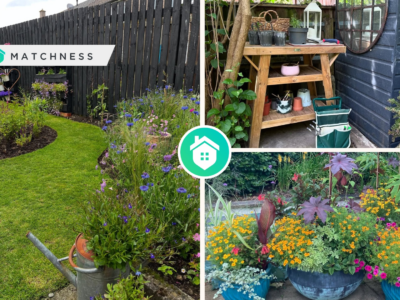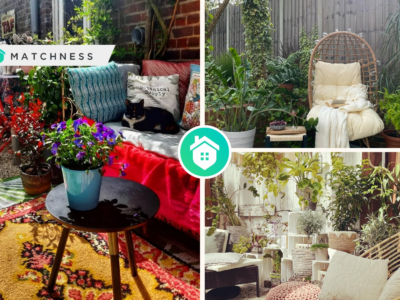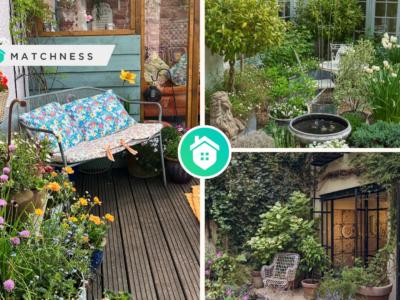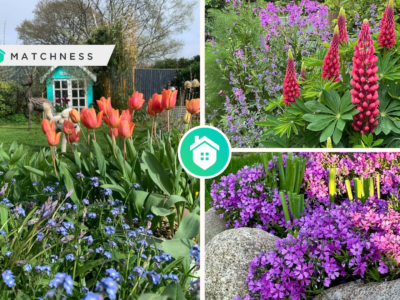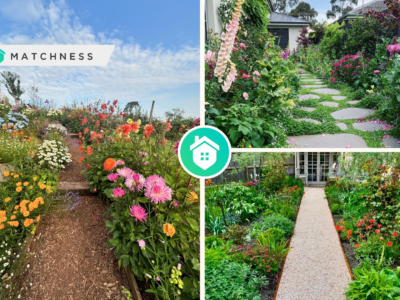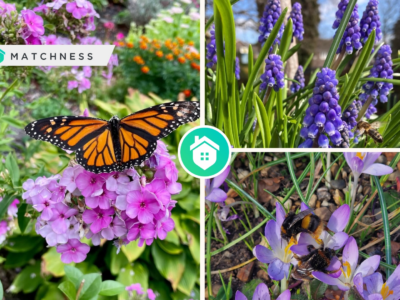Shade gardening can be both a challenge and an opportunity for creating unique and tranquil garden spaces. By understanding the specific needs of shade-loving plants and incorporating thoughtful design elements, you can create a beautiful and serene shade garden that offers a refreshing retreat from the sun. Anyway, there are some types of shade gardens that you should know. Each type has a different treatment that you should adjust. Here are those types:
- Full Shade: No direct sunlight at all, often found under dense tree canopies or on the north side of buildings.
- Partial Shade: Receives 3-6 hours of direct sunlight, usually in the morning or late afternoon.
- Dappled Shade: Light filters through tree leaves, creating a mix of sun and shadow.
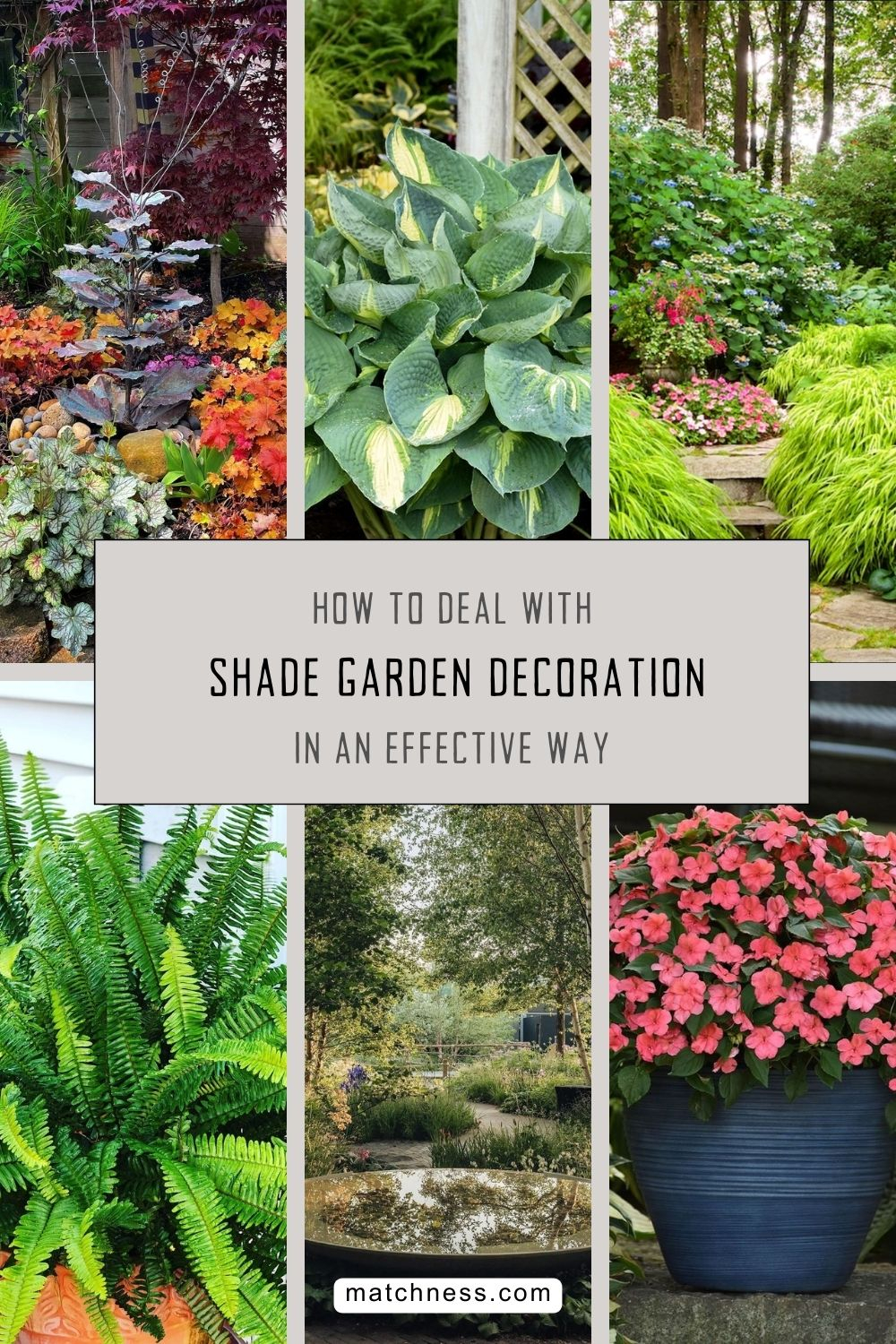
The next thing that you should know before starting with your shade garden is to know the possible plants that you can grow. Well, you should be careful because not all plants can fit in the shade garden. Here are some of the plants.
Hostas
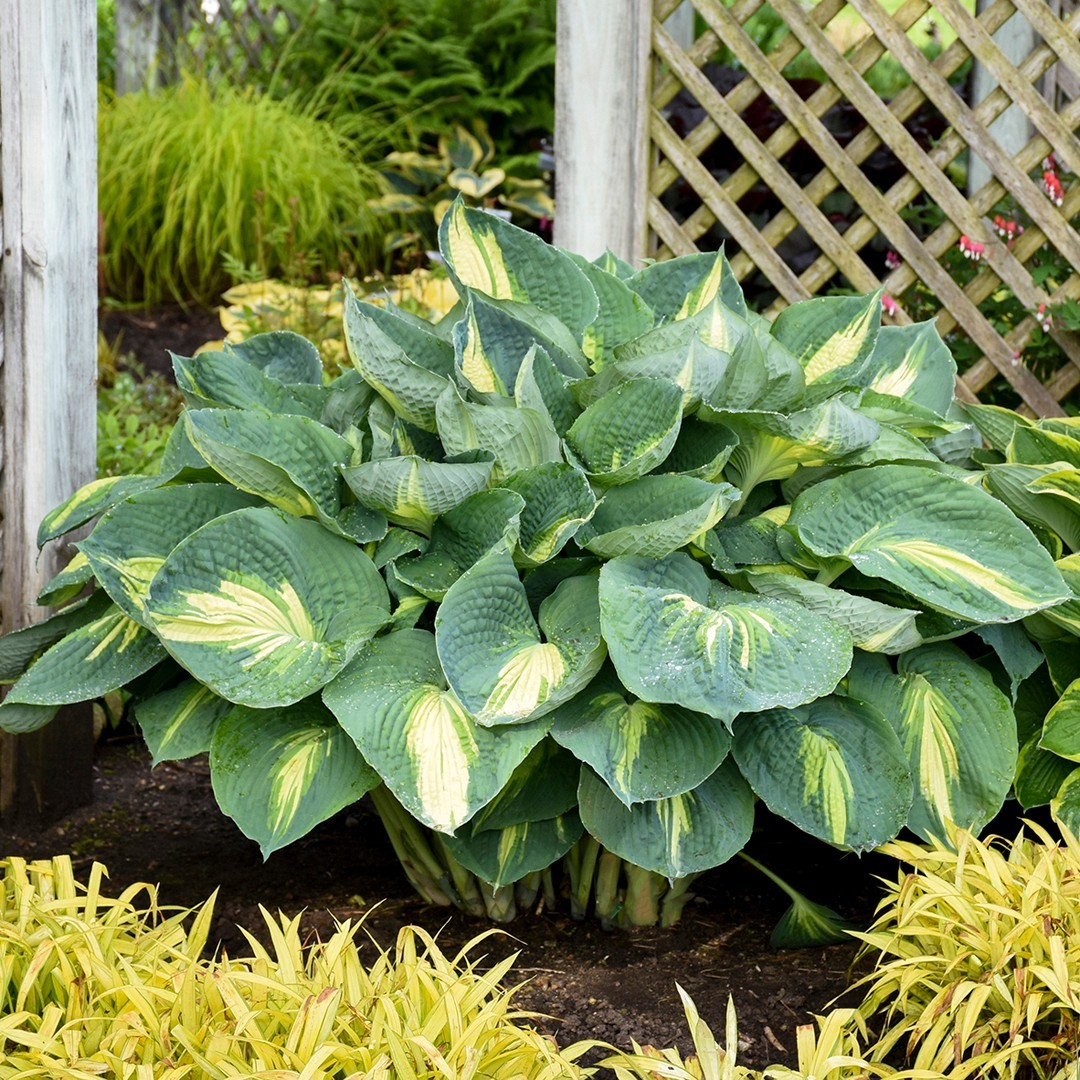
Known for their large, lush leaves, hostas come in various sizes and colors. Look at how it looks majestic when it already grows well. You can grow the hostas in pots or directly on the ground. Hostas from @provenwinners
Ferns
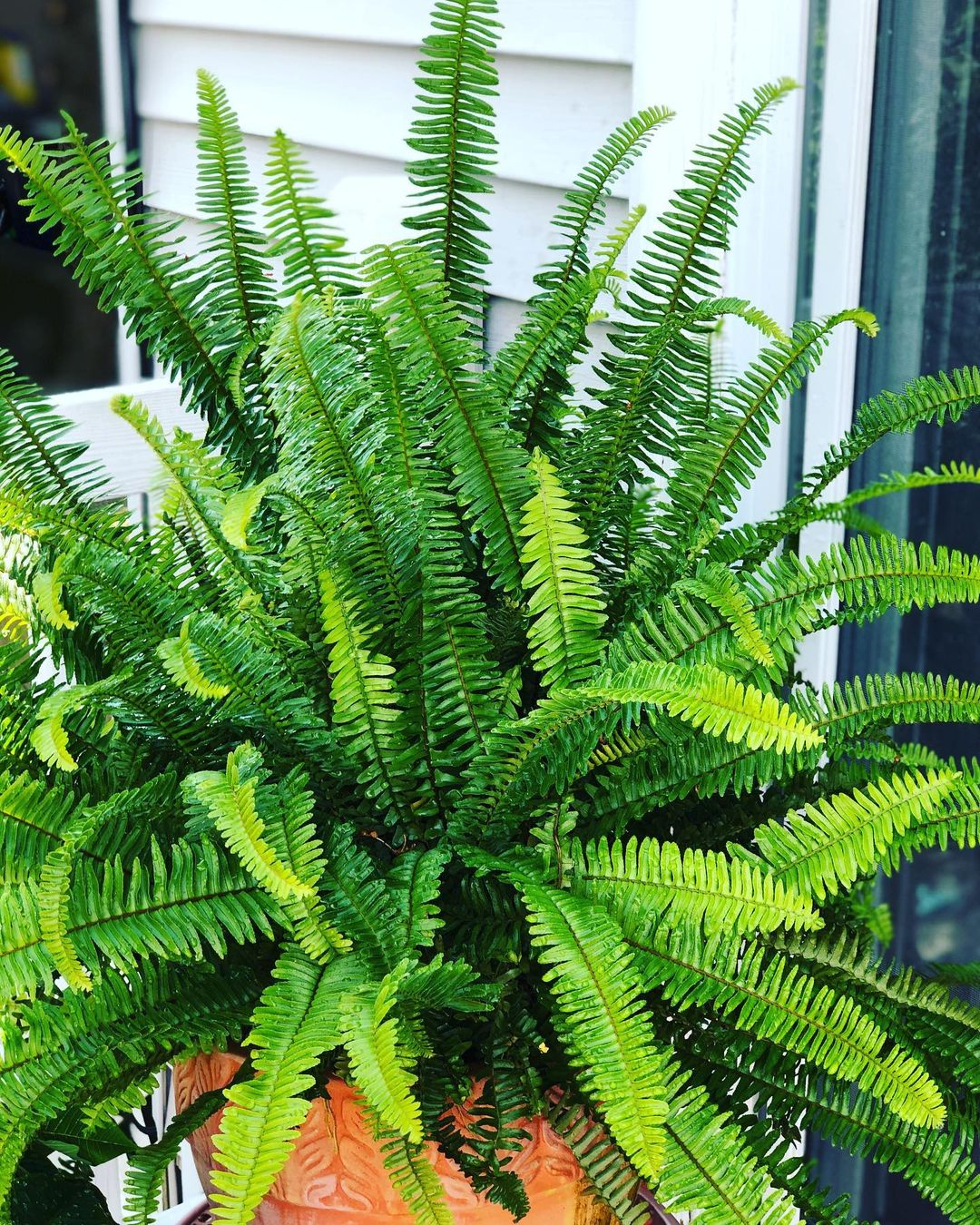
The fern is ideal for full shade. It is known to add a delicate and feathery texture. The shape is also unique so that you can use it to give aesthetic value to your garden. Ferns from @vickymami8482
Heuchera (Coral Bells)
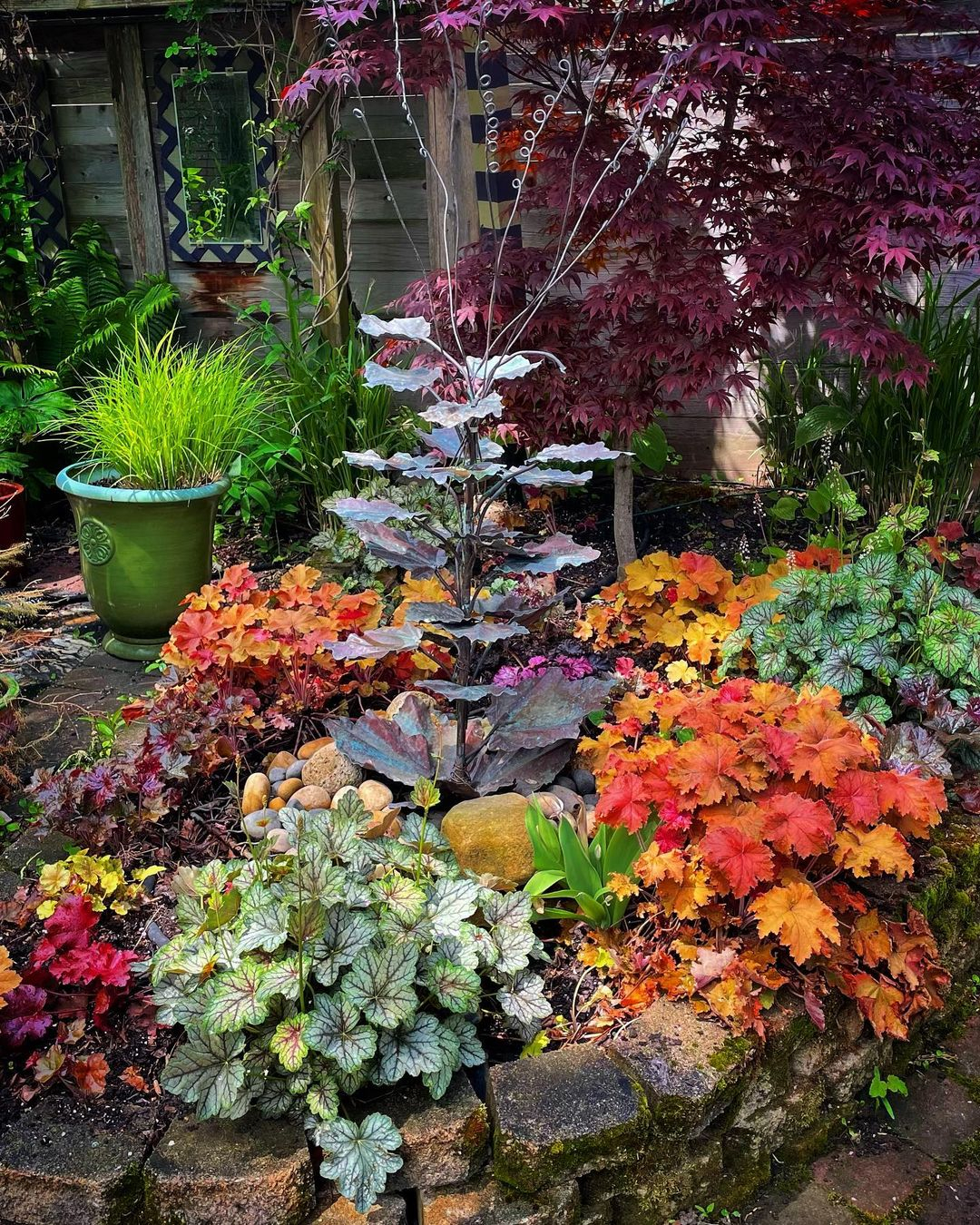
It is interesting how the heuchera offers vibrant foliage colors, from deep purples to bright greens. In case you want to have a colorful garden, this kind of plant is the one that I recommend. Heuchera from @jimcharlier
Astilbe
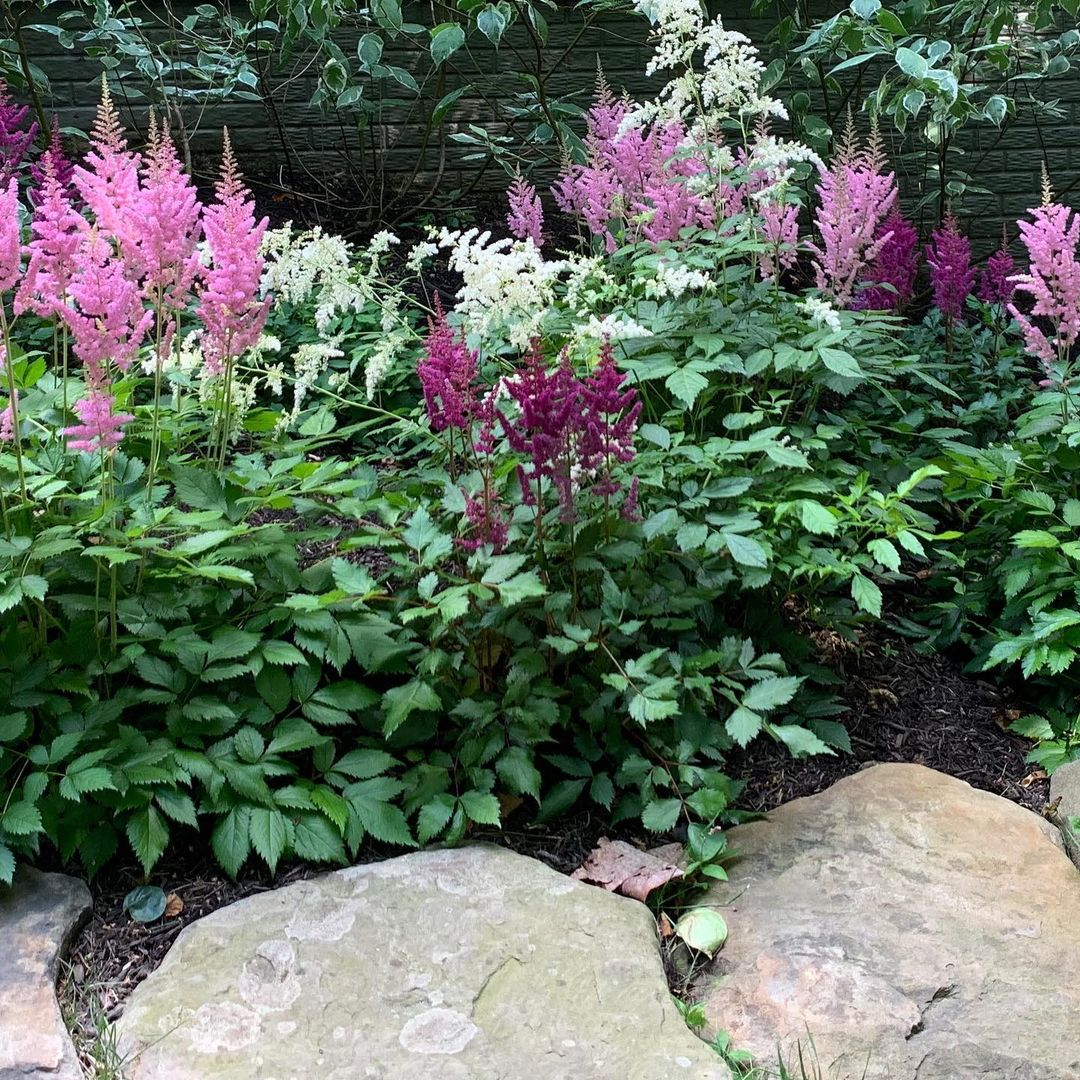
Astilbe provides beautiful plume-like flowers and is perfect for partial to full shade. The flowers are also varied in colors so that you can use it to beautify your garden. Astilbe from @amerplant
Impatiens
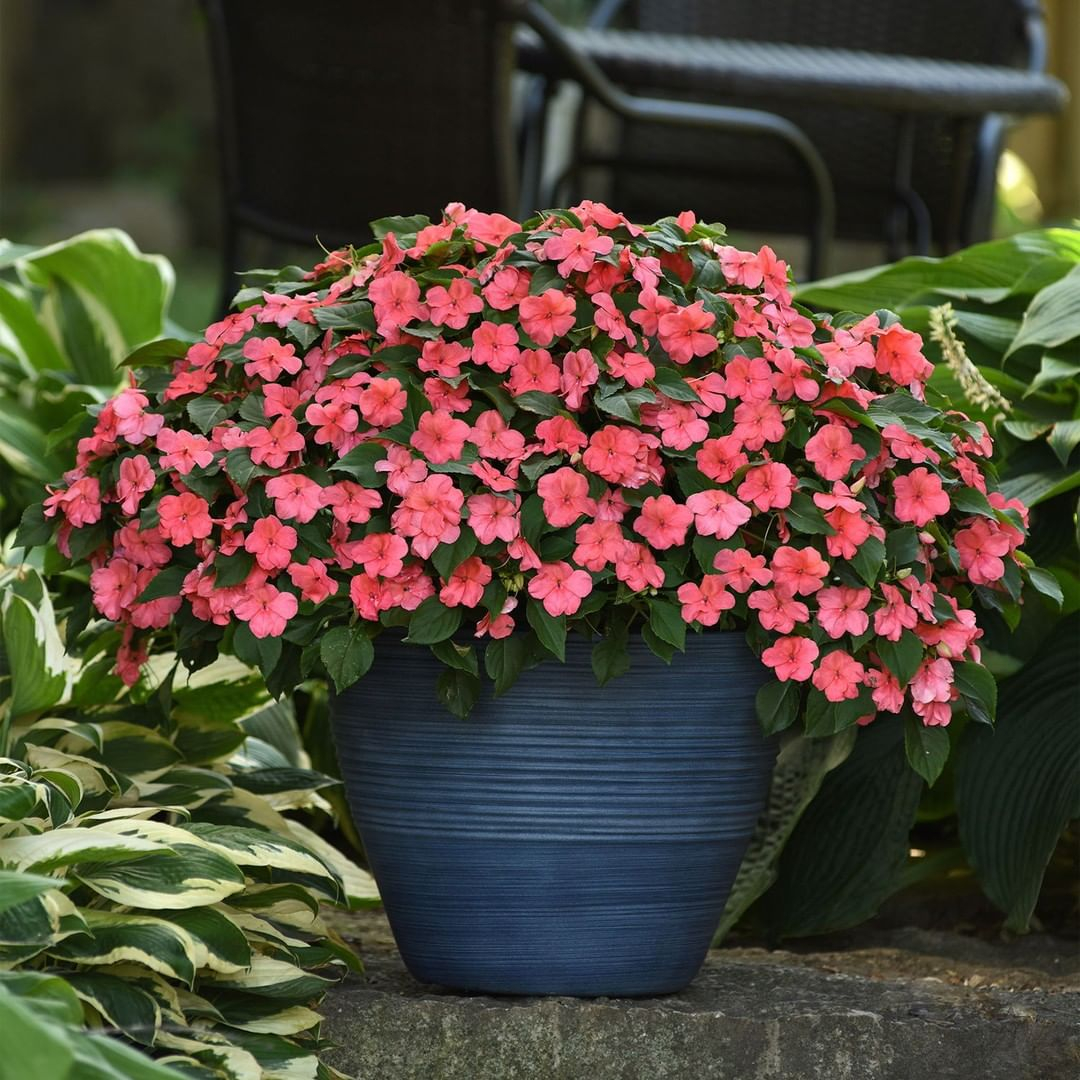
It is a kind of plant that is a colorful annual that blooms well in the shade. We recommend you to have it in pots because it is too pretty to be on the ground. However, it doesn’t mean that you can’t have it on the ground. It is just based on your preference. Impatiens from @national_garden_bureau
Besides the plants, for a proper garden design, there are some design elements that you should know. That will be really important to enhance your garden impression.
1. Pathways and Seating Areas
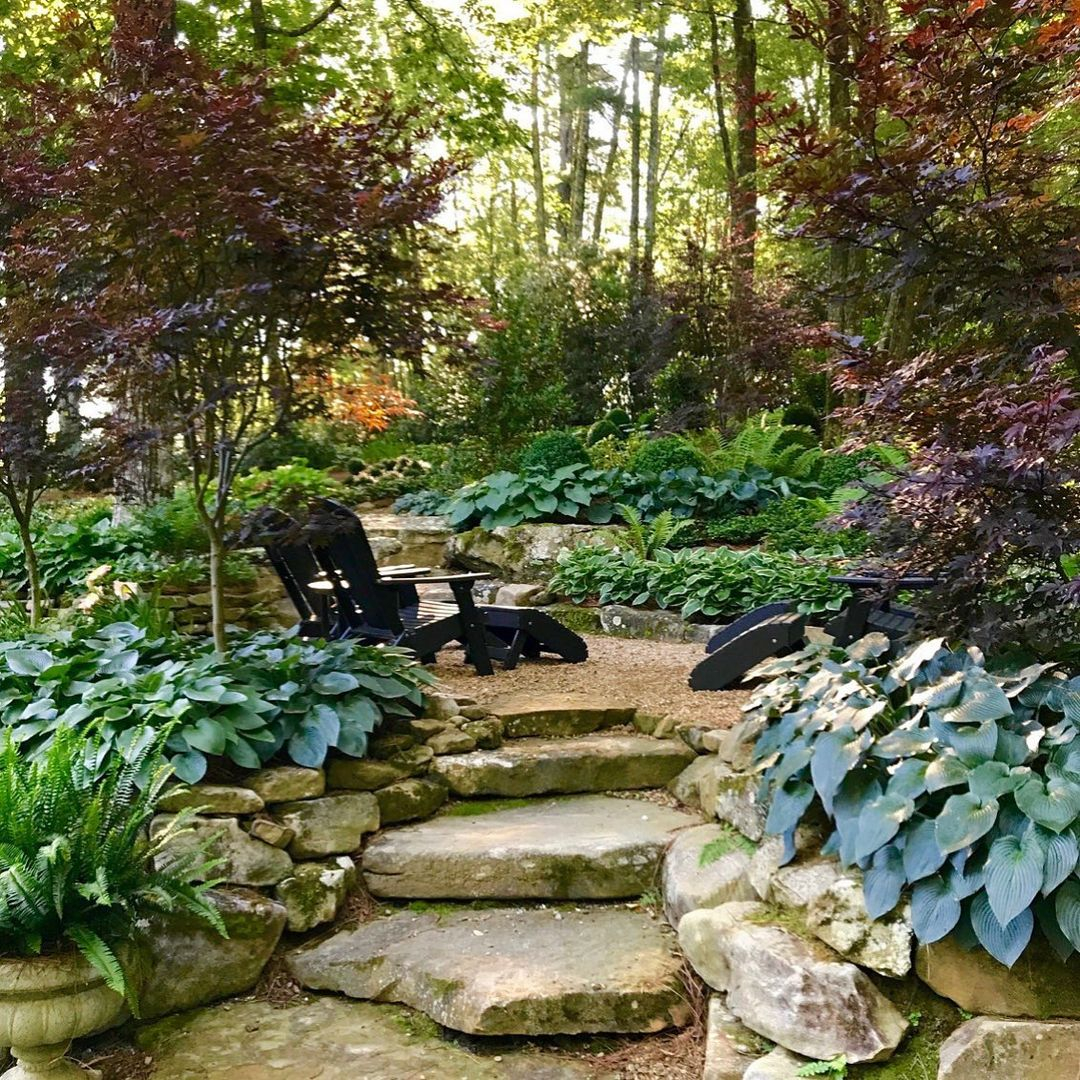
Use stone to create inviting paths. Then, you can add a cozy seating area in a shaded spot. Here, you don’t need to install an umbrella or pergola since the area is already shaded. Pathways and Seating Area from @mylavenderroselife
2. Water Features
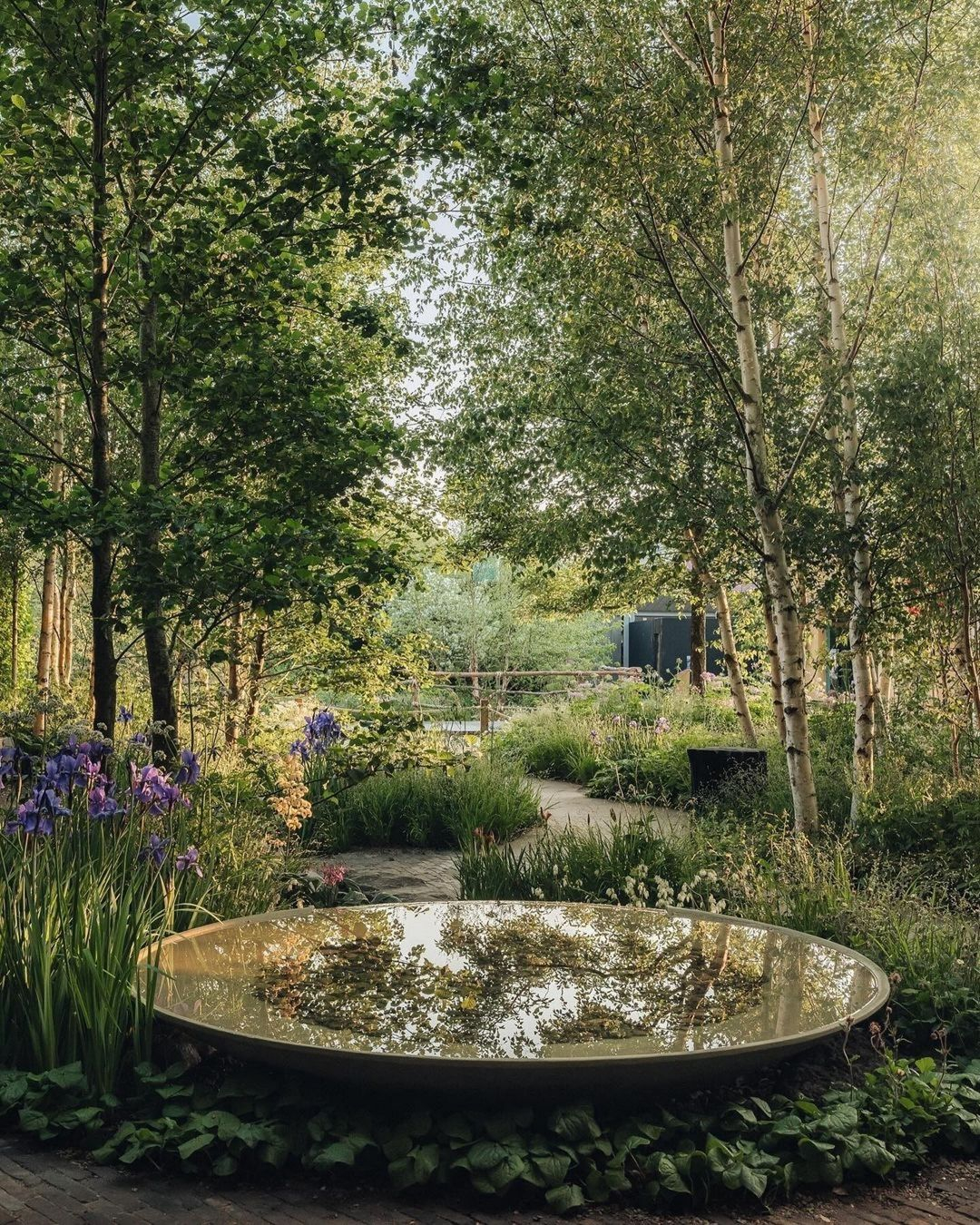
Look at how this water feature can add a sense of tranquility and attract wildlife. Not only the birds but the butterflies and dragonflies will also be interested to come. Water Feature from @lasbandurrias_plantasypaisaje
3. Layered Planting
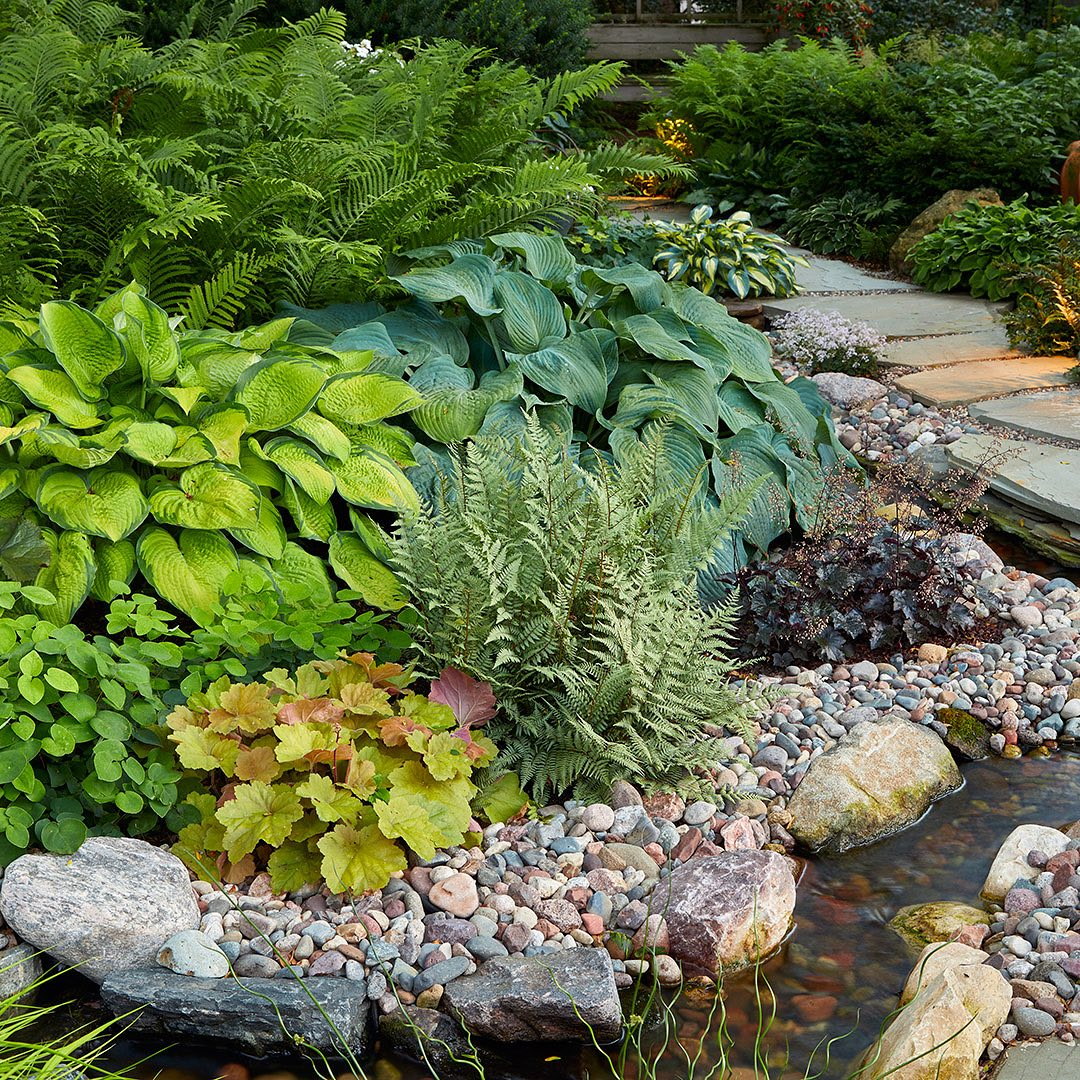
Arrange plants in layers to add depth and interest. Place taller plants like hostas at the back, medium plants like ferns in the middle, and shorter groundcovers in the front. Layered Planting from @gardengatemagazine
4. Contrast and Color
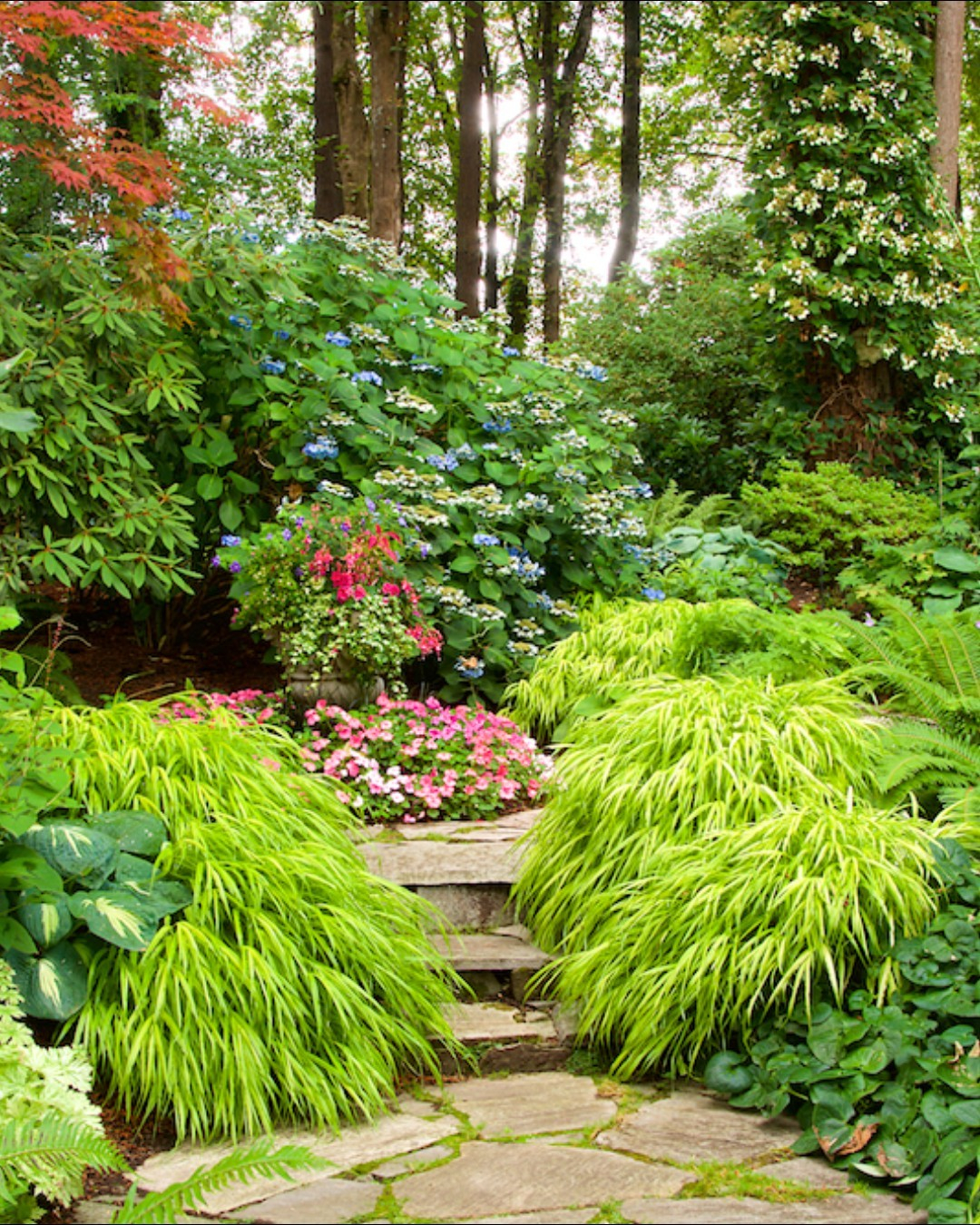
Use plants with different leaf shapes, sizes, and colors to create visual interest. Variegated leaves and plants with bright foliage can brighten up shady areas.Contrast and Color from @gardendesignmag
The last thing that you should know is the way to maintain your shade garden. It will be quite different from the common garden. Get the advice below!
1. Watering: Shade gardens typically require less water than sunny gardens, but it’s important to ensure the soil remains consistently moist, especially during dry spells.
2. Pruning and Cleanup: Regularly prune trees and shrubs to allow sufficient light to reach the plants below. Remove dead leaves and spent flowers to keep the garden tidy.
3. Fertilizing: Use a balanced, slow-release fertilizer in spring to give your plants a boost. Avoid over-fertilizing, as shade plants generally require less nutrition than sun-loving plants.





